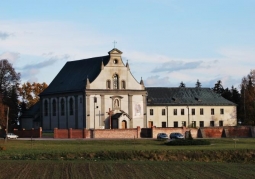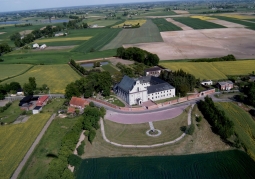Sanctuary of the Mother of God of Gypsies in Rywałd - Radzyń Chełmiński
No weather data
0.0 /5
Number of ratings: 0
Address: Rywałd , 87-220 Radzyń Chełmiński
Rywałd Królewski przyjaciele thanks of Temple / Sanctuary. Nativity of the Blessed Virgin Mary and the monastery of Fathers Capuchins. This town was located in 1312 under Chełmno law, but the temple existed in this place before. According to source information, in 1319, a parish and a newly built church functioned in Rywałd, in which a miraculous statue of the Mother of God was placed (which, according to legend, was carved by a knight from the castle in Radzyń). The church was destroyed during the 13-year war (15th century). Around 1590, a new church made of "logging tree" was built in Rywałd Królewski, in which the sculpture of the Mother of God was again placed. The Reformation in Pomerania, which fought especially against all symptoms of the ancient cult of wonderful paintings and figures, was not conducive to the development of the cult of the Miraculous Madonna. that the church in Rywałd was not converted into a Protestant church, as was practiced in other Pomeranian towns. This fact proves indirectly that the then owners of Rywałd, who were successive Radzyń starostes, were Catholic. From scarce sources it is known that the temple in Rywałd was significantly damaged during the two Swedish wars (in 1626-1629 and 1655-1660), however, the cult of the Mother of God still existed (this is evidenced by numerous votive offerings from that period and the report of the canonical visitation conducted in 1667). In 1693, the parish in Rywałd attached to nearby Amber A new wooden church was built in the place of the Rałdzki temple destroyed by war conflagrations. The building erected in 1685-1698 was the Chełm Castellan Sebastian Czapski, the then owner of Rywałd. Consecration was made in 1689 by bishop Tomasz Skotnicki. According to the custom of the era, the new temple received the call of St. Sebastian to commemorate the name of the founder, which replaced the previous title, it is the Nativity of the Blessed Virgin Mary. According to the chronicle, the new church formed a hexagon made of trees with 10 larger and 6 smaller windows. The wonderful figure returned to its place. Unfortunately, the wooden church in Rywałd Królewski turned out to be insufficient for the needs of the cult of the miraculous figurine, growing since the beginning of the 18th century. That is why Piotr Czapski (successor of the founder and Chełmno castellan in 1709-1717) began building a new stone temple in the Romanesque-Baroque style in 1710. The construction, continued by the successors of the founder, was completed in 1738. This fourth religious building in Rywałd Królewski, which was rebuilt in later years in some architectural details and equipped with a number of various objects, has survived to this day. On February 8, 1748, the bishop of Lesko gave the Capuchins a freshly built, though not yet fully finished, church with a statue of the Mother of God surrounded by worship. Eight years later, the construction of the monastery began, which was completed in 1779. That year, the brother of Chełmno Bishop Karol Hohenzollern consecrated the temple on 7 October, which received the title of the Nativity of the Blessed Virgin Mary and Saint. Sebastian. After the first partition of Poland in 1772, Rywałd Królewski was incorporated into the Prussian partition. Despite the changed political conditions, the pilgrimage to Mrs. Rywałdz continued. Several thousand pilgrims came to the annual indulgences, who celebrated on their knees an image with the statue of the wonderful Madonna and gave generous gifts to maintain the sanctuary. In 1810, a cassation edict of religious orders was issued in Prussia. The dissolution of the Rywałd monastery was decided by a cabinet ordinance of March 5, 1823. A correction house for diocesan priests was organized here. After Poland regained independence in 1918, the cult of Madonna Rywałdzka revived significantly. In the interwar period, the Gypsies who came here with their traveling camps and numerous families showed special honor for the miraculous statue of the Mother of God in Rywałd. Local tradition is associated with the miraculous healing of a seriously ill gypsy child, who around 1930 was healed in front of the figure of the Rywałdz Madonna. In gratitude, his mother cut her raventail braid and sacrificed it on the altar. Since the head of the wonderful figure had been wearing a wig of black hair since time immemorial, a legend was spread in some circles of pilgrims about the alleged regrowth of the hair from the wig. Among the titles traditionally blessed the famous Lady, a new one appeared: "Our Lady of the Gypsy". In the gloomy years of the Nazi occupation, the monastery building was adapted by the Germans to a military hospital, making numerous modifications and structural changes (including the sewage system). Escaping from Rywałd, they took with them more valuable religious items, golden crowns from the figure of the Mother of God and silver votive offerings. On January 13, 1947, following the decisions of church and religious authorities, the first (after 120 years) Capuchins arrived in Rywałd. The worshipers of the Mother of God of Rywałdz also began to come to the temple after the war, renewing pilgrimages held by the occupant pilgrimages (which always take place on the second Sunday of September). The Gypsy pilgrimage of 1949, in which they came to Rywałd with their king Kwiek for thanks for their free release from extermination in concentration camps, was special in character and number. At that time, they offered the Gypsy Mother of God a golden heart made of a German 20 mark, justifying this act by surviving only those Gypsies who during the war recommended their lives to Madonna Rywałdzka. The post-war period, however, is not only the time of the dynamically developing Marian cult for the monastery in Rudadz. In the 1950s, several Catholic bishops were kept there. At the beginning of 1951, the administrator of the Archdiocese of Wrocław, Fr. Karol Milicz. In 1953, the Capuchin monastery became the first place of detention of priest Primate Stefan Wyszyński, who spent almost less than three weeks here (26. 09 - 12.10.10.1953). On the other hand, from 21. 05. 1956 to 22. 09. 1956, Czesław Kaczmarek, the bishop of Kielce, was forced to live in Rywałd. In the years 1970-1972 a new floor was made of multi-colored marble slabs, at the same time they were also made by the carpenter master Antkowiak from Jabłonów Pomorskie church benches. Outside in front of the church - AA communities set up the Way of the Cross. An obelisk was also erected in honor of the Primate of the Millennium. In the village there is also a post-Evangelical church from the late nineteenth century, together with the pastor's building and an evangelical cemetery (devastated). The small religious cell, in which the cardinal lived, was left unchanged to this day. On the walls of this room have survived the stations of the cross made by him in the form of small crosses with signatures, drawn in pencil directly on the plaster. The beautiful baroque-classicist interior and atmosphere of the Rudadz temple enchants every pilgrim who comes here. Be amazed and you :)
Komentarze
No results
Nearby places
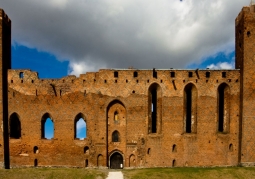
Ruins of the Teutonic Castle - Radzyń Chełmiński
Category: LocksOne of the most interesting castles of the Teutonic Order. Located on the outskirts of the city, on a partially dried castle lake. From the ruins of the castle, brick walls on the mound have been preserved, surrounded...
7 km
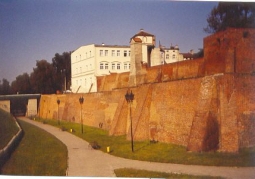
City Walls - Grudziadz
Category: Defensive Fortifications and CastlesThe medieval city walls in Grudziądz were built in the 14th-15th century. The system of fortifications composed of defensive walls and a moat, is connected in the north-west part with the previously erected...
23 km
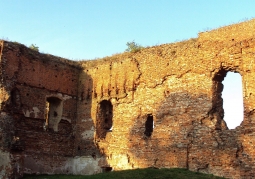
Ruins of Radzikowski Castle - Radziki Duże
Category: LocksThe castle was built in the early 15th century. The construction of the castle dates back to the years 1405-1466. From the very beginning it belonged to the Ogońscy family, who eventually began to use the Radzikowski...
29 km
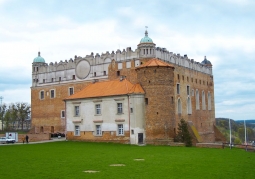
Teutonic Castle in Golub - Golub-Dobrzyń
Category: LocksThe Golub Castle is a four-wing conventual Teutonic castle from the turn of the 13th and 14th centuries, erected on a hill towering over the city, now within the city limits of Golub-Dobrzyń; preserved in the...
30 km
Godziny otwarcia
6.30 - 20.00
Nearby places

Ruins of the Teutonic Castle - Radzyń Chełmiński
Category: LocksOne of the most interesting castles of the Teutonic Order. Located on the outskirts of the city, on a partially dried castle lake. From the ruins of the castle, brick walls on the mound have been preserved, surrounded...
7 km

City Walls - Grudziadz
Category: Defensive Fortifications and CastlesThe medieval city walls in Grudziądz were built in the 14th-15th century. The system of fortifications composed of defensive walls and a moat, is connected in the north-west part with the previously erected...
23 km

Ruins of Radzikowski Castle - Radziki Duże
Category: LocksThe castle was built in the early 15th century. The construction of the castle dates back to the years 1405-1466. From the very beginning it belonged to the Ogońscy family, who eventually began to use the Radzikowski...
29 km

Teutonic Castle in Golub - Golub-Dobrzyń
Category: LocksThe Golub Castle is a four-wing conventual Teutonic castle from the turn of the 13th and 14th centuries, erected on a hill towering over the city, now within the city limits of Golub-Dobrzyń; preserved in the...
30 km

